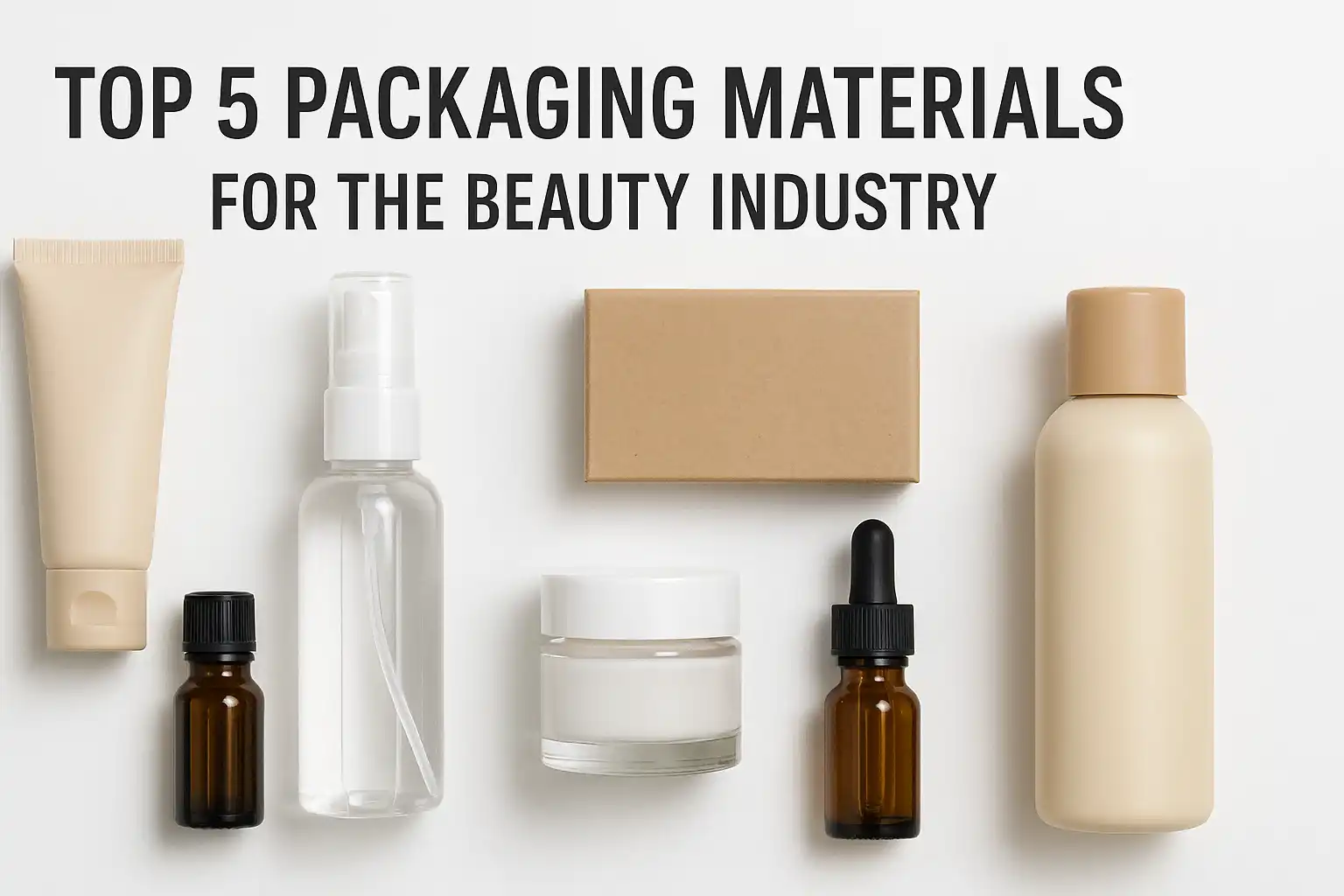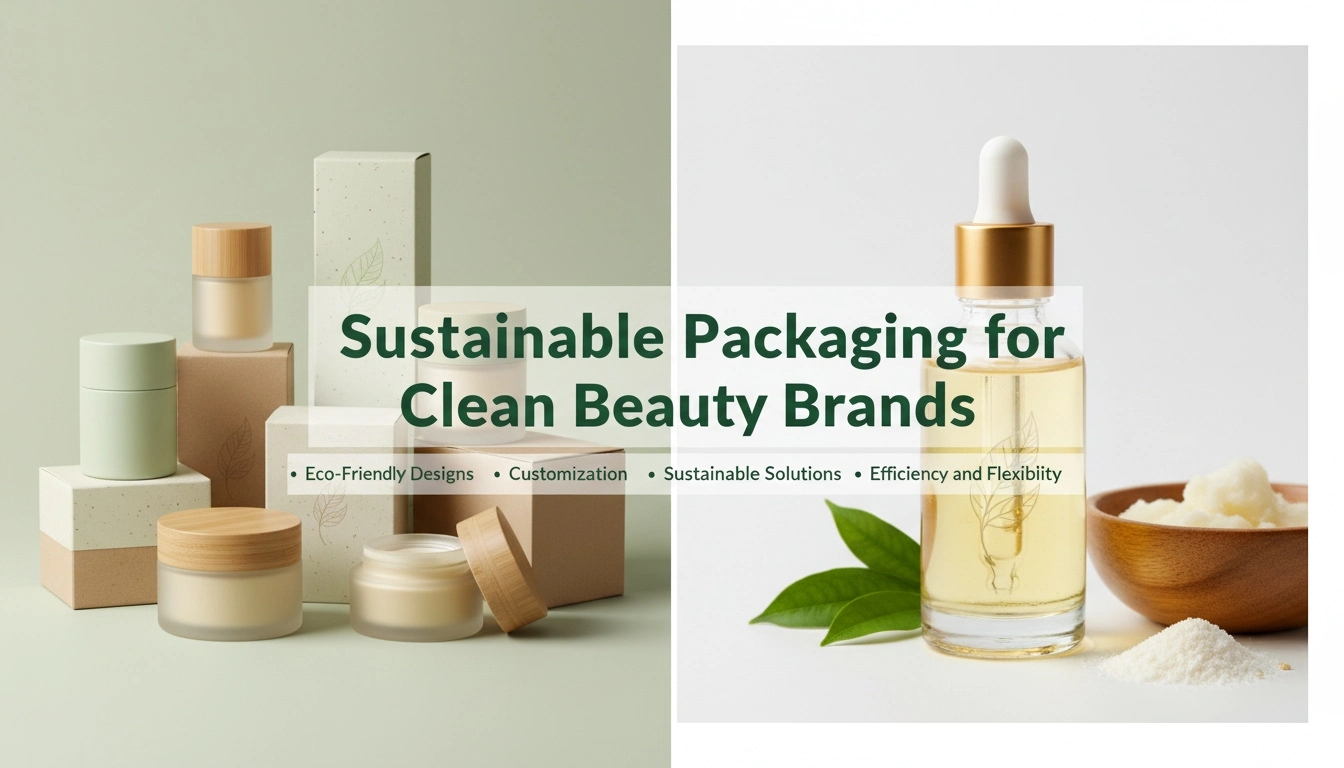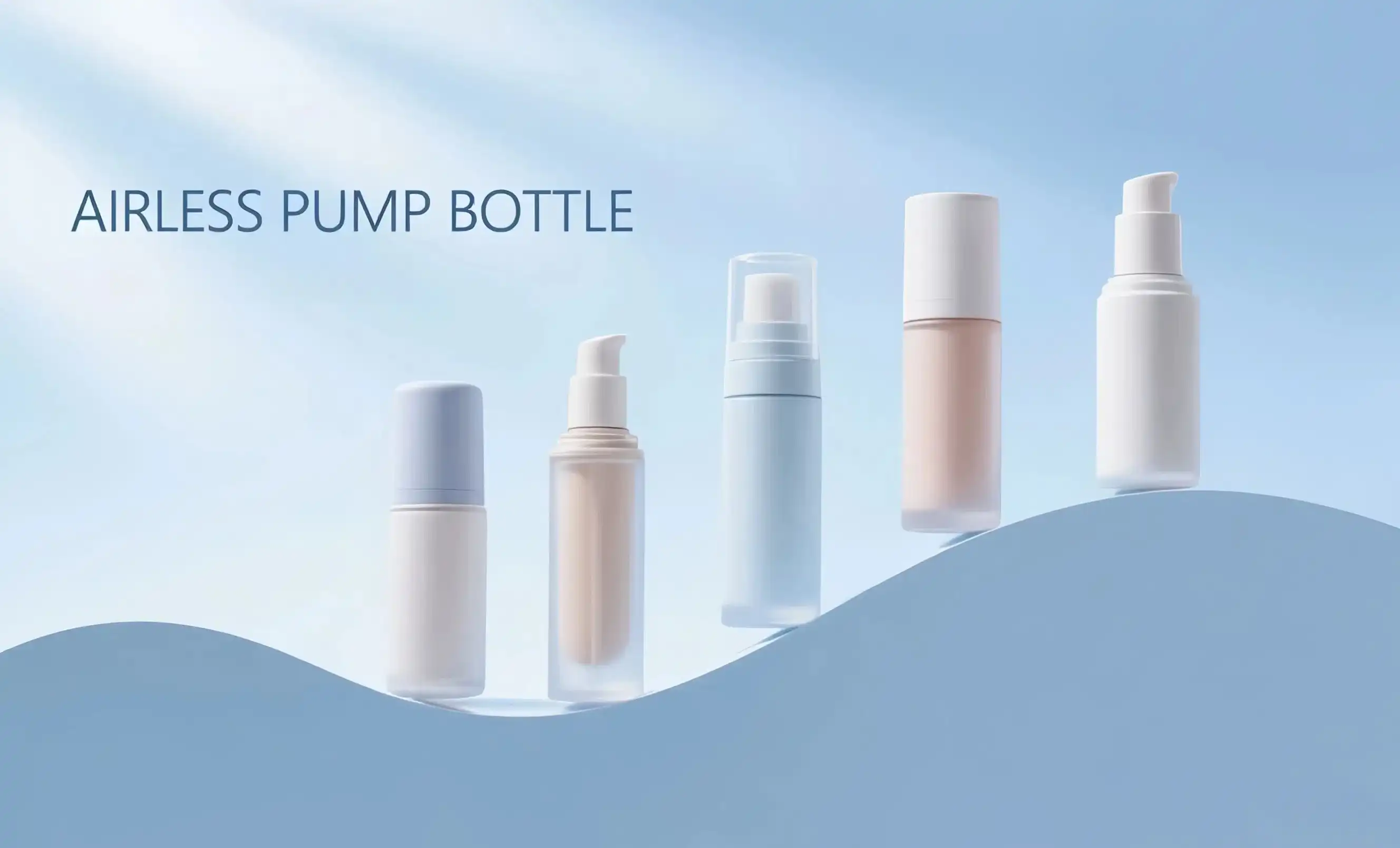What Are the 5 Best Materials for Makeup Packaging?
When it comes to makeup packaging, selecting the right material is crucial for preserving product quality, enhancing user experience, and meeting sustainability goals. Here are the top five materials currently dominating the beauty industry:

1. Glass: Timeless Elegance and Recyclability
Glass has long been a staple in beauty packaging, particularly for high-end products. Its luxurious feel and ability to preserve product integrity make it an excellent choice for serums, foundations, and fragrances. Glass is infinitely recyclable without losing quality, making it a sustainable option for eco-conscious brands.
2. Recycled Plastics: A Second Life for Synthetic Materials
As the beauty industry strives to reduce its environmental impact, recycled plastics have gained popularity. Post-consumer recycled (PCR) plastics offer a sustainable alternative to virgin plastics, reducing waste and energy consumption. Many brands now use PCR plastics for bottles, jars, and tubes, contributing to a circular economy.
3. Aluminum: Lightweight and Infinitely Recyclable
Aluminum is becoming increasingly popular in beauty packaging due to its lightweight nature and excellent recyclability. It's particularly suitable for products like aerosol sprays, compacts, and travel-sized containers. Aluminum can be recycled indefinitely without losing its properties, making it a sustainable choice for eco-friendly brands.
4. Biodegradable Polymers: Innovation in Eco-Friendly Packaging
Biodegradable polymers derived from renewable resources such as corn starch or sugarcane are gaining traction in the beauty industry. These materials offer similar functionality to traditional plastics but break down naturally in the environment, reducing long-term waste. They're particularly suitable for single-use items and sample-sized products.
5. Paper-Based Materials: Sustainable and Versatile
Paper-based packaging, including cardboard and molded pulp, is experiencing a resurgence in the beauty industry. These materials are renewable, biodegradable, and easily recyclable. Brands are using innovative paper-based solutions for product boxes, palettes, and even refillable containers, appealing to environmentally conscious consumers.
PCR Plastic vs. Biodegradable Polymers: Which Wins for Cosmetics?
As the beauty industry shifts towards more sustainable packaging solutions, two materials have emerged as frontrunners: Post-Consumer Recycled (PCR) plastic and biodegradable polymers. Both options offer environmental benefits, but they differ in their production, use, and end-of-life scenarios. Understanding these differences is crucial for brands looking to make informed decisions about their makeup packaging.
The Case for PCR Plastic
PCR plastic is made from recycled plastic products, giving new life to materials that might otherwise end up in landfills or oceans. Using PCR plastic in beauty packaging helps reduce the demand for virgin plastics, thereby conserving natural resources and reducing carbon emissions associated with plastic production. Many beauty brands are embracing PCR plastic for their bottles, jars, and tubes, as it offers similar performance characteristics to virgin plastic while aligning with sustainability goals.
The Promise of Biodegradable Polymers
Biodegradable polymers, on the other hand, are designed to break down naturally in the environment, typically through the action of microorganisms. These materials are often derived from renewable resources such as corn starch, sugarcane, or cellulose. Biodegradable polymers offer the potential to significantly reduce long-term plastic waste, especially for single-use or short-lived beauty products.
At Topfeelpack, our advanced airless bottles are designed to prevent air exposure, maintaining the product's effectiveness and ensuring a longer shelf life.
Comparing Environmental Impact
When evaluating PCR plastic and biodegradable polymers for cosmetic packaging, several factors come into play:
- Production: PCR plastic requires less energy to produce compared to virgin plastic, but biodegradable polymers often have a lower carbon footprint due to their plant-based origins.
- Recyclability: PCR plastic can be recycled multiple times, contributing to a circular economy. Biodegradable polymers, while compostable, may not be suitable for traditional recycling streams.
- End-of-life: Biodegradable polymers break down more quickly in the environment, reducing long-term waste. However, they require specific conditions to degrade properly, which may not always be met in real-world scenarios.
- Performance: PCR plastic often matches the performance of virgin plastic, while biodegradable polymers may have limitations in terms of durability or barrier properties.
The choice between PCR plastic and biodegradable polymers ultimately depends on the specific requirements of the product, the brand's sustainability goals, and the available waste management infrastructure in target markets. Some brands are opting for a hybrid approach, using PCR plastic for larger containers and biodegradable polymers for single-use items or sample sizes.
Why Luxury Brands Are Switching to Sustainable Aluminum Compacts
In recent years, there has been a noticeable trend among luxury beauty brands towards adopting sustainable aluminum compacts for their powder-based products. This shift represents a significant departure from traditional plastic compacts and reflects the industry's growing commitment to environmental responsibility. Understanding the reasons behind this trend can provide valuable insights for brands looking to enhance their sustainability credentials while maintaining a luxurious product experience.
The Appeal of Aluminum in Luxury Makeup Packaging
Aluminum compacts offer several advantages that make them particularly attractive to luxury beauty brands:
- Recyclability: Aluminum is infinitely recyclable without losing its properties, making it an excellent choice for brands committed to reducing waste.
- Durability: Aluminum compacts are sturdy and long-lasting, aligning with the premium quality expected from luxury products.
- Aesthetic Appeal: The sleek, metallic finish of aluminum compacts conveys a sense of luxury and sophistication.
- Weight: Despite their sturdy construction, aluminum compacts are lightweight, enhancing the user experience.
- Customization: Aluminum can be easily embossed, engraved, or colored, allowing brands to create unique, eye-catching designs.
Environmental Benefits of Aluminum Compacts
The switch to aluminum compacts aligns with the growing consumer demand for sustainable beauty products. Some key environmental benefits include:
- Reduced Plastic Waste: By replacing plastic compacts with aluminum, brands can significantly reduce their contribution to plastic pollution.
- Energy Efficiency: Recycling aluminum requires only 5% of the energy needed to produce new aluminum, resulting in significant energy savings over time.
- Circular Economy: The high recyclability of aluminum supports a circular economy model, where materials are reused rather than discarded.
Challenges and Innovations
While aluminum offers numerous benefits, its adoption in beauty packaging is not without challenges. Some brands have had to innovate to address issues such as:
- Product Compatibility: Ensuring that aluminum doesn't react with or affect the quality of the cosmetic product inside.
- Refillable Systems: Developing user-friendly refill systems to maximize the sustainability benefits of aluminum compacts.
- Consumer Education: Informing customers about the recyclability of aluminum compacts and encouraging proper disposal.
Many luxury brands are overcoming these challenges through innovative design and partnerships with packaging experts. For example, some have developed special coatings to prevent product-metal interactions, while others have created intuitive refill mechanisms that enhance the user experience.
The shift towards sustainable aluminum compacts in the luxury beauty sector represents a broader trend of premium brands taking the lead in environmental responsibility. By combining sustainability with luxury, these brands are setting new standards for makeup packaging that blend eco-friendliness with high-end appeal.
Our cutting-edge airless bottles at Topfeelpack are made to keep out air, preserving the product's potency and guaranteeing a longer shelf life. Our dedication to sustainability includes waste reduction, energy efficiency, and sustainable materials.
Conclusion
The beauty industry's packaging landscape is rapidly evolving, with sustainability at the forefront of innovation. From glass and recycled plastics to aluminum and biodegradable polymers, brands have a wide array of options to choose from when it comes to packaging their products. The key lies in selecting materials that not only protect and showcase the product but also align with the brand's values and environmental commitments.
As consumers become increasingly eco-conscious, the demand for sustainable packaging solutions in the beauty industry will only grow. Brands that embrace these innovative materials and commit to reducing their environmental impact are likely to gain a competitive edge in the market. The future of beauty packaging is not just about aesthetics; it's about creating solutions that are good for both the product and the planet.
Are you looking for sustainable and innovative makeup packaging solutions for your beauty brand? At Topfeelpack, we specialize in advanced airless bottles designed to prevent air exposure, maintain product effectiveness, and ensure longer shelf life. Our commitment to sustainability extends to our use of eco-friendly materials, energy-efficient processes, and waste reduction strategies. We offer fast customization, competitive pricing, and quick delivery to meet the dynamic needs of the beauty industry. Whether you're a high-end skincare brand, a trendy makeup line, or a professional cosmetics OEM/ODM factory, we have the expertise to deliver packaging solutions that align with your brand image and sustainability goals. Contact us at pack@topfeelgroup.com to learn more about our cosmetic airless bottles and how we can support your packaging needs.
References
- Johnson, E. (2022). Sustainable Packaging in the Beauty Industry: Trends and Innovations. Journal of Cosmetic Science, 73(4), 215-230.
- Smith, A. & Brown, B. (2023). Comparative Analysis of Packaging Materials for Cosmetic Products. International Journal of Sustainable Packaging, 12(2), 45-60.
- Green Beauty Alliance. (2023). Annual Report on Eco-Friendly Packaging Solutions in Cosmetics.
- Taylor, R. (2022). The Rise of Aluminum in Luxury Cosmetic Packaging. Packaging Digest, 59(8), 32-38.
- Wong, L. et al. (2023). Life Cycle Assessment of Biodegradable Polymers in Beauty Product Packaging. Environmental Science & Technology, 57(11), 6789-6801.
- European Cosmetic Packaging Forum. (2023). Consumer Attitudes Towards Sustainable Beauty Packaging: A Market Research Report.

 - 副本_1745399213966.webp)

_1747827716538.webp)

